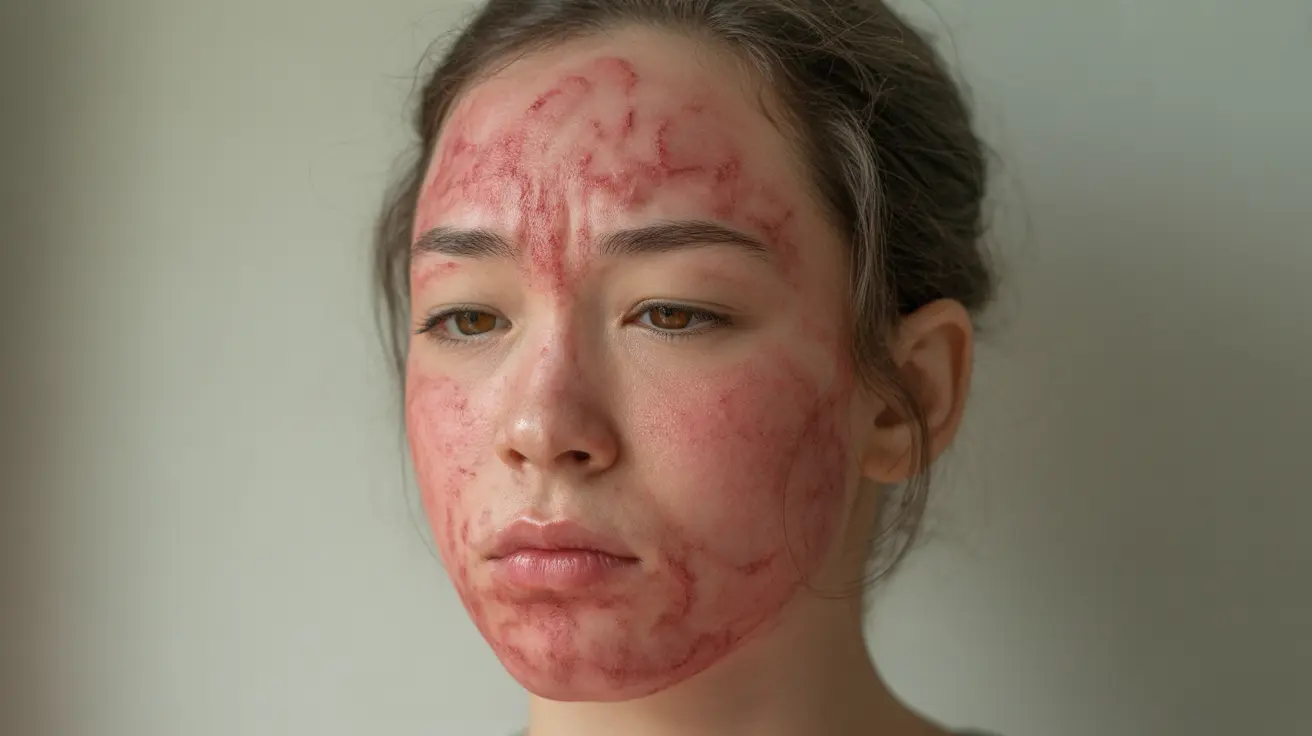An allergic reaction on the face can be both uncomfortable and concerning. These reactions occur when your immune system responds to a substance it perceives as harmful, triggering symptoms that can range from mild redness to severe swelling. Understanding the causes, recognizing symptoms, and knowing how to manage these reactions is crucial for anyone experiencing facial allergies.
Common Triggers of Facial Allergic Reactions
Facial allergic reactions can be triggered by various substances and conditions that come into contact with your skin or affect your body systemically. Here are the most common causes:
Skincare and Cosmetic Products
- Fragrances in moisturizers and serums
- Preservatives in cosmetics
- Harsh chemicals in facial cleansers
- Hair care products that contact the face
- Essential oils and natural ingredients
Environmental Allergens
- Pollen from trees and grasses
- Pet dander
- Dust mites
- Mold spores
- Air pollutants
Identifying Symptoms and Their Severity
Recognizing the symptoms of a facial allergic reaction is crucial for proper treatment. Common signs include:
- Redness and inflammation
- Itching or burning sensation
- Swelling, especially around eyes and lips
- Hives or welts
- Dry, scaly patches
- Blistering in severe cases
Treatment Options and Relief Measures
Immediate Relief Strategies
- Remove any potential allergens from the skin
- Apply a cool compress to reduce swelling
- Take an oral antihistamine
- Use gentle, fragrance-free moisturizer
- Avoid scratching or touching the affected area
Medical Treatments
- Prescription antihistamines
- Topical corticosteroids
- Anti-inflammatory medications
- Specialized creams for specific conditions
- Epinephrine auto-injectors for severe reactions
Prevention Strategies
Preventing facial allergic reactions involves several key steps:
- Patch test new skincare products before full application
- Keep a diary of triggers and reactions
- Read ingredient labels carefully
- Maintain a consistent skincare routine
- Use hypoallergenic products when possible
When to Seek Medical Attention
Certain symptoms warrant immediate medical care:
- Severe swelling affecting breathing
- Spreading rash or hives
- Signs of anaphylaxis
- Persistent symptoms that don't improve with home treatment
- Facial swelling accompanied by fever
Frequently Asked Questions
- What are the most common causes of an allergic reaction on the face, and how can I tell what triggered it?
The most common causes include skincare products, cosmetics, environmental allergens, and food allergies. Keep a detailed log of products used and foods consumed when reactions occur to help identify triggers. Consider the timing of symptoms and any new products or environmental exposures.
- What are the best treatments for an allergic rash or swelling on the face, including over-the-counter options and home remedies?
Effective treatments include oral antihistamines, cold compresses, and calming moisturizers. Over-the-counter hydrocortisone cream can help with itching. Natural remedies like colloidal oatmeal masks or aloe vera can provide relief. Always use gentle, fragrance-free products during a reaction.
- Can food allergies cause a rash or swelling on the face, and what foods should I watch out for?
Yes, food allergies can cause facial reactions. Common trigger foods include nuts, shellfish, eggs, dairy, and soy. These can cause immediate reactions including facial swelling, hives, and in severe cases, anaphylaxis. Keep a food diary and work with an allergist for proper testing.
- How can I prevent allergic reactions on my face, especially from skincare products or seasonal allergies?
Prevention strategies include patch testing new products, using hypoallergenic items, monitoring pollen forecasts, and maintaining good indoor air quality. Consider using air purifiers during high-pollen seasons and keep windows closed when pollen counts are high.
- When should I see a doctor for an allergic reaction on my face, and what symptoms are considered serious?
Seek immediate medical attention if you experience difficulty breathing, severe swelling, spreading rash, or signs of anaphylaxis. Also consult a healthcare provider if symptoms persist despite over-the-counter treatments or if reactions occur frequently.




